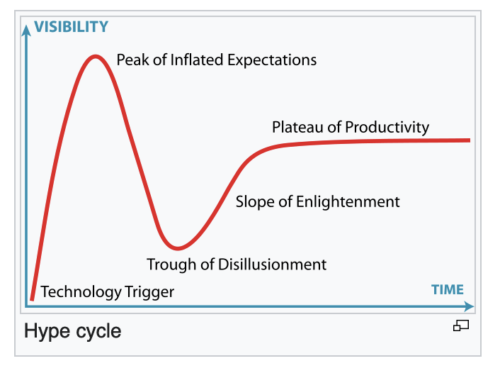More Evolution, Less Disruption:

For companies, 2025 means less disruptive change and more evolutionary growth. In view of the overall social situation, especially with the rise of populism, the pressure is increasing not only economically, but also in interpersonal relationships. This is where companies need to take a closer look. It is more important than ever to fill key positions with people who can cope with the increasing demands both professionally and personally. AI can help with this.
1. Building Resilient Mid-Level Leaders
Many people are starting the new year potentially overwhelmed. According to a Gartner survey, three-quarters of HR managers feel overburdened by the expanding range of their responsibilities. The development of middle management often gets neglected, yet mid-level leaders are crucial in initiating, communicating, and supporting necessary innovations.
Therefore, in 2025 companies should focus more on developing leadership skills. AI technologies can support this by analyzing specific traits such as entrepreneurial thinking, resilience, or optimism in employees, and deriving targeted learning and development programs.
2. Investing in Long-Term HR Tech
More than half of HR leaders report that current technologies do not meet today’s or future requirements. The focus should not just be on efficiency but on supporting HR staff in their development.
A shift in thinking is needed: investments in smart technologies should aim to strengthen the transformative role of HR. The Gartner Hype Cycle shows that technologies go through various phases before they can be productively utilized.
Realistic management of these phases helps in setting expectations and developing sustainable solutions.

Currently, many companies are still between phases 2 and 3. Expectations for AI-powered tools are both highly positive and negative. At the same time, it is becoming increasingly apparent that AI alone does not offer a comprehensive solution. While this may disappoint some, it presents an opportunity for HR professionals whose task is to identify and foster human potential. They can skip the “trough of disillusionment” and proceed directly to the “slope of enlightenment.”
However, support from number-driven stakeholders is crucial. Investors and decision-makers must be willing to invest not only in time and cost savings but also in transformative technologies and learning and development programs for HR staff.
3. Cultural Change Bottom-up – With Change Influencers
Top-down mandated innovations often face resistance and contribute to “change fatigue.” After disruptive changes, it is essential to allow time for evolutionary stabilization. New things must “restabilize, lose their surprise effect, and normalize,” as sociologist Armin Nassehi puts it regarding successful societal change processes.
In a corporate context, “change influencers” can help foster changes. These employees with strong peer networks drive innovations forward. AI-powered tools can help identify them.
In this context, we highly recommend the Ada Fellowship Program.
Small, easily implementable technologies (“tech nuggets“) can also facilitate change and establish new work practices.
4. AI Competencies Become Mandatory – And Soft Skills Are Not Just Optional
Starting in 2025, the EU AI Act will require companies to ensure that employees using AI systems possess the necessary competencies. As technology becomes more embedded in HR work, HR departments will increasingly depend on other disciplines within the company, such as data protection, IT, legal, work councils, or procurement. The first three will become even more involved in assessing the potential risks of AI. Companies must therefore rethink their processes and consider how to implement AI tools to take on truly business-critical tasks. Ideally, they will have a provider that supports them and ensures that the systems are used in compliance with EU regulations.
Alongside technical knowledge, fostering soft skills remains crucial. As technology increasingly shapes our daily lives, reflecting on our interactions with it becomes more important. What behaviors do we want to maintain? What should we let go of? What new ones should we establish?
5. Addressing the Skilled Worker Shortage: Strengthening Employees Instead of a Four-Day Work Week
The shortage of skilled workers is real. The craft sector alone currently lacks 113,000 skilled workers. However, companies are not merely wish-fulfillers. A four-day work week will not be feasible for most companies in 2025. Instead, they need to focus on how to achieve significant results with the existing workforce without burning them out. Here, psychology is also important, especially traits like resilience, optimism, and self-efficacy, which can be measured using AI.
Moreover, we need a shared understanding that work does not always mean joy but also involves growth and overcoming challenges. Conflicts are inevitable. What matters is how they are handled – whether people engage with each other respectfully and constructively even in difficult phases. There is no such thing as a “perfect organization” or a “perfect employee.” The acknowledgement of contradictions and simultaneity within an organization is crucial.
Ideally, the tools used should also consider this complexity. Instead of quickly categorizing people, they should aim to view all aspects of a personality in a differentiated manner and derive suitable roles and development opportunities for employees.
Conclusion
It will be a challenging year, but we remain optimistic. Despite external pressures, companies have many areas within their control, such as whom they hire and promote, how they collaborate, how they support their employees, and how they use the scarce “resource” of human potential effectively. Integrating AI technology offers enormous opportunities but requires a shift in thinking and learning at all levels – from leadership development to fostering soft skills to creating a supportive, encouraging, and demanding corporate culture. It is crucial for companies to focus not only on efficiency but on sustainable development and transformation skills, enabling people to adapt to new, challenging situations and use technology meaningfully.
Prof. Dr. Florian Feltes
Prof. Dr. Florian Feltes is co-founder and co-CEO of zortify and a forerunner in AI-supported HR innovation. Together with his team, he develops intelligent personality diagnostics and helps companies identify the perfect candidates—without expensive assessments and without bias. His vision: a world in which every company can effortlessly form high-performance teams and create work environments that allow human potential to flourish.


13 + 1 Bias in Recruiting: How to Recognize and Overcome Them to Find Truly Suitable Candidates

Between Trump, zero-motivation-days and the “Robin Hood of talent”
